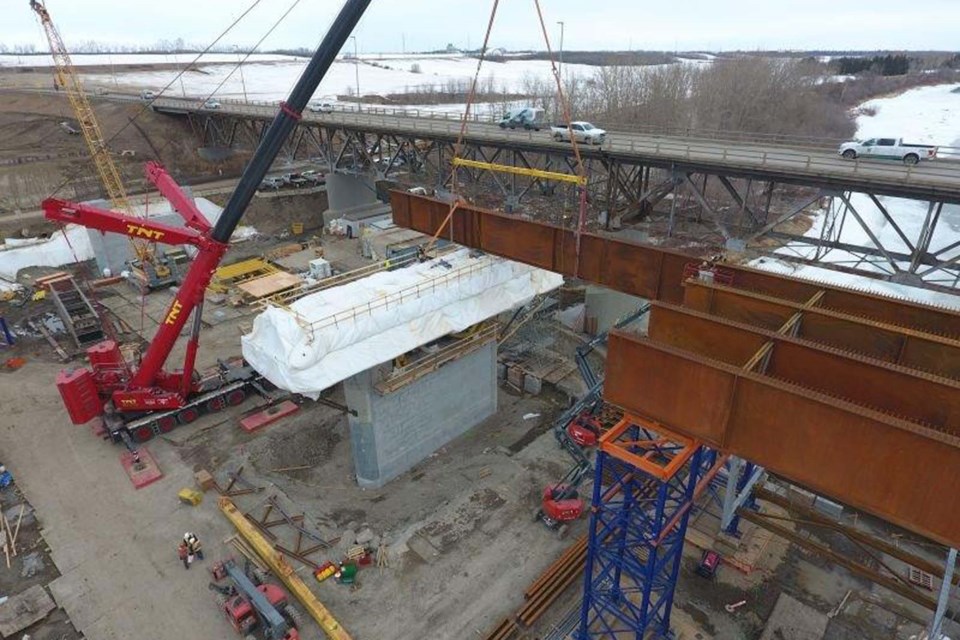Alberta’s Industrial Heartland is still hard at work nowadays despite the challenges of the coronavirus pandemic.
The Gazette checked in this week with companies in the Heartland region to see how the pandemic had affected their operations.
Pretty much every facility in the Heartland region is considered critical infrastructure and allowed to keep active during the pandemic, said Laurie Danielson of the Northeast Capital Industrial Association. Sites are taking extra steps to clean and disinfect surfaces, and having non-essential personnel work from home to protect those who must be on-site.
While many industrial sites draw hundreds of workers, most of those workers are spread out over huge areas and aren’t required to work in close quarters, Danielson said.
“It’s not something that can’t be managed,” he said of distancing requirements.
Most companies have put big planned capital projects on hold, said Mark Plamondon of the Alberta’s Industrial Heartland Association. While ultra-cheap oil and gas prices are hurting the energy sector, they’re actually sharpening the Heartland’s competitive edge, as most companies there use oil and gas as ingredients for other products.
Many major turnaround operations have been delayed or cancelled, which has sharply reduced the number of workers that would normally move into the Heartland this season, Danielson said. Other than that, factories are continuing to churn out product and load it into rail cars for shipment.
“To the fullest extent possible, it is business as usual.”
Case studies
Alberco Construction senior project manager Mike Rozendaal said his crew of about 50 couldn’t afford to slow down work on the new Hwy. 15 bridge over the North Saskatchewan River. They’re pushing the bridge’s structural steel halfway across the river, and have to have their work done before the spring ice breakup.
“At the moment, our crew is still operating without impact,” he said.
Rozendaal said workers have plenty of room to spread out on the 300-metre-long worksite and have staggered their shifts to further reduce personal contact. Morning safety briefings are now held standing in a broad circle outside instead of in a crowded office.
“We ended up taking a steel sea can and we converted it into a sanitization room,” he said, complete with hot water, soap and sinks so workers could wash their hands.
About a third of the several hundred workers at the Sturgeon Refinery have been working from home during the pandemic, said Vanessa Goodman, the manager of external relations for North West Redwater Partnership. Anyone who goes on-site has their temperature checked with a thermal camera to see if they have a fever (a symptom of COVID-19) and is given protective gear if they have to work in close contact with others. They’ve also hired more cleaning staff to sanitize badge scanners and vehicles, hauled in trailers to give office workers more space, installed Plexiglas screens in some areas, and closed cafeterias.
“It’s definitely a bit of a change,” Goodman said, as some workers now also have to contend with kids who are taking school at home.
Goodman said the refinery had given workers surplus laptops for their kids to use at home – some had five kids doing online learning and just one computer.
While gasoline demand has plummeted in part due to the pandemic, Goodman said the drop for diesel has been much smaller, and has not affected the refinery’s production.
Rozendaal said he hasn’t seen any delays due to sick workers, although four did isolate at home briefly due to non-COVID-related illnesses. Some are feeling the pressure of having kids at home instead of at school, but most are managing.
“I think the guys are actually very happy to have a place to work,” he said.
Rozendaal said his crew was lucky to have this big project to keep busy with right now, and he hoped the province’s stepped-up infrastructure investments would keep them employed in the future.




